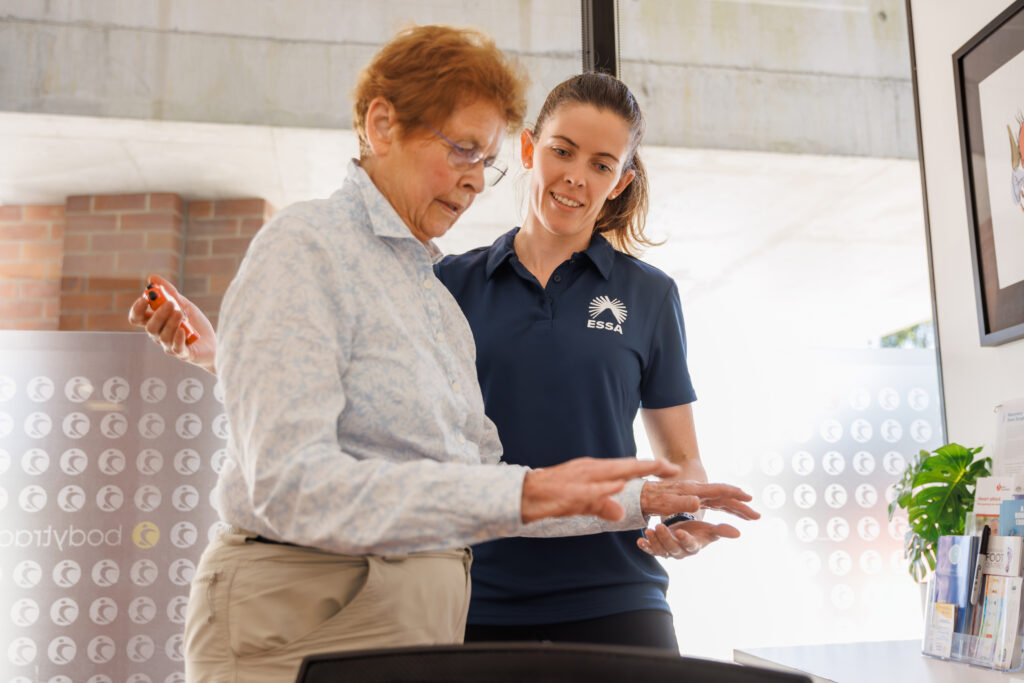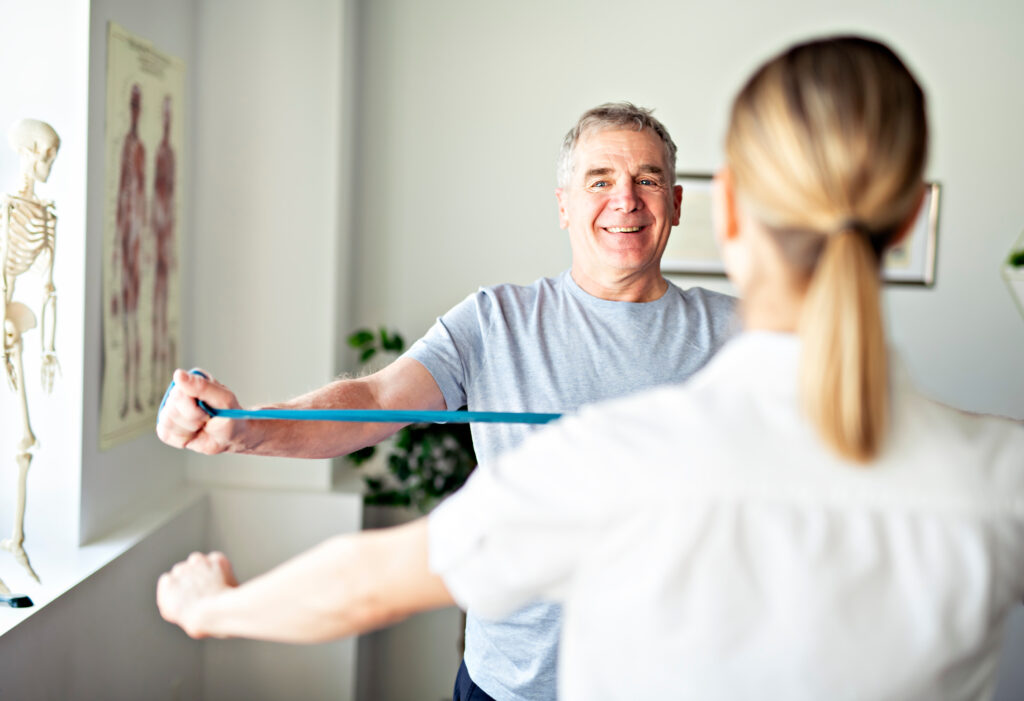Parkinson's disease
Parkinson’s disease is a common, progressive and debilitating disorder affecting many areas of the nervous system. Historically, it was believed that only dopaminergic neurons in the brain were affected, leading to motor impairments including tremor, rigidity (stiffness), bradykinesia (slow movements), akinesia (freezing or absence of movement) and balance problems.
However, as the neurological changes are diffuse, there are also many other motor and non-motor impairments, such as anxiety, depression, impaired cognition, sleep disorders and pain. Autonomic function may also be affected by the disease and medications.
Home / Parkinson’s disease

How does exercise help with Parkinson's disease?
Evidence from systematic reviews and randomised controlled trials shows that exercise, when used in conjunction with medication, can reduce symptoms, improve mobility, muscle strength and balance, reduce falls and may slow disease progression. Exercise may also have positive effects on mood, fatigue, pain, constipation and may improve cognition and sleep. These benefits can help people with Parkinson’s disease to optimise their abilities, improve their quality of life and remain independent for as long as possible. Exercise also provides a means by which individuals can actively participate in the management of their disease.
What type of exercise is best for Parkinson's disease?
There is no evidence that one specific type of exercise is best for people with Parkinson’s disease. Programs should include a variety of types of exercise (e.g. aerobic, balance, coordination and muscle strength) and should commence as soon as possible after diagnosis – though it is never too late to start.
Flexibility exercises
Stretching helps you fight the muscle rigidity that comes with Parkinson’s and helps your muscles and joints stay flexible. Perform stretches at least 3-4 times a week for at least 10 minutes at a time and hold for 10-30 seconds.
Aerobic exercises
Any activity that works the heart, lungs and muscles and helps the body burn calories. It is recommended that people with Parkinson’s aim for 2.5 hours of aerobic exercise per week (30 minutes per day, five times a week). You can be creative and work around any physical limitations.
Strengthening exercises
There are no specific guidelines for strength training for people with Parkinson’s muscles can be strengthened at any stage and are vital to improving functional ability. Strength training can take the form of lifting weights, using machines at the gym, using your own body weight for resistance or using common household items. It’s recommended that strength exercises are performed at least 10-15 times, 2-3 days per week focusing on five main muscle groups (core muscles, thigh muscles, buttocks, back and triceps).
Things to remember
- Be safe, consult an accredited exercise professional first before commencing an exercise program.
- Don’t do too much, too soon and gradually increase the intensity and duration of your workouts.
- Exercise programs should incorporate a variety of different modes of exercise (e.g. aerobic, balance, coordination and progressive resistance).
- One size does not fit all and exercise should be carefully prescribed for the individual.
- Individual preferences for exercise location and methods should be considered to maximise enjoyment and adherence.

Frequently asked questions
What is an Accredited Exercise Physiologist (AEP)?
An Accredited Exercise Physiologist (AEP) is an allied health professional that prescribes individualised exercise therapy to help people manage their chronic conditions, disabilities, long-term injuries and so much more. They are the most qualified professionals in Australia when it comes to the prescription safe and effective of exercise therapy.
Who should see an AEP?
Anyone who wants to move safely and improve their health can benefit. From chronic conditions to injury recovery, or simply wanting advice on how to exercise right, an exercise physiologist is the expert to see.
Is an AEP covered by Medicare or private health insurance?
Yes. As allied health professionals, exercise physiology services are recognised in government health funding including Medicare, National Disability Insurance Scheme (NDIS) and Department of Veteran’s Affairs (DVA), workers’ compensation and private health insurers. It’s important that you check with your provider as coverage can vary.
Where can I find an AEP?
Use recognised directories like Exercise & Sports Science Australia (ESSA), ask your GP or look for allied health clinics with AEP credentials.


